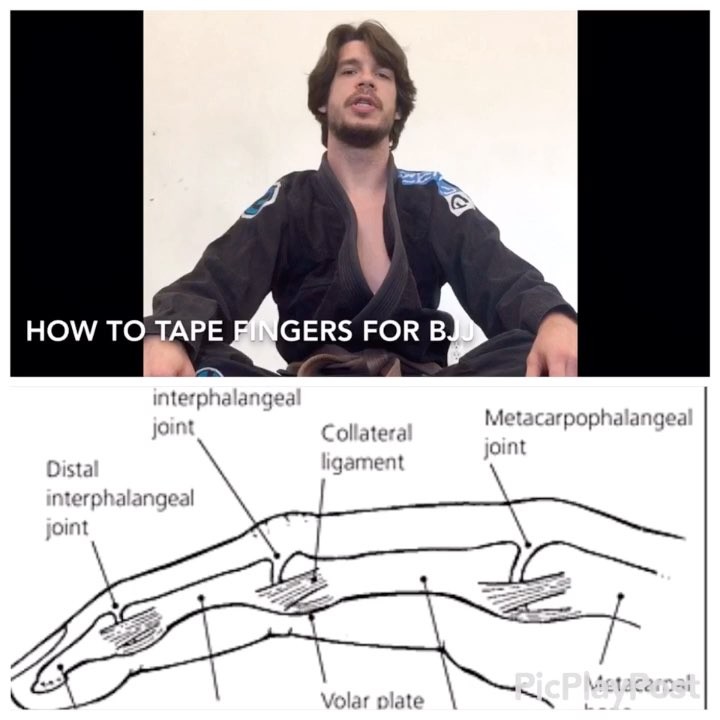Finger taping: Injury prevention for BJJ
_____________________________
Establishing the proper grip is integral to initiating offense in grappling arts, specifically those where jackets are involved such as brazilian jiu jitsu, judo and sambo. Many matches are won based on who is able to achieve their intended grips to allow for the throw, choke or guard pass. Because grips are so important it is not surprising that many grapplers have a history of finger pains and aches.
.
Anatomy of the finger: There are three joints of the finger:
1️⃣ metacarpophalangeal joint (MCP joint)
2️⃣proximal interphalangeal joint (PIP joint)
3️⃣distal interphalangeal joint (DIP joint)
The joints involved with grip injuries are often the PIP and DIP joints. The volar plate and collateral ligaments help to stabilize the PIP and DIP joints. The volar plate is a ligament on the front of the knuckle to prevent hyperextension and the collateral ligaments are on the sides of the joint to prevent side bending. Most finger injuries begin with damage to these ligaments: sprains which mean the ligaments are stretched or have partial tears. If the ligament ruptures then dislocations can happen.
.
Post-traumatic osteoarthritis: With repetitive stress, multiple sprains and/or dislocations the joints will begin to develop arthritis. Signs often begin with stiffness, general aches and restrict movement. As the arthritis progresses there will be increased laxity/instability followed by limited mobility. In the later stages you may notice enlarged joints.
.
Taping strategy:
1️⃣X taping: placing an X on the front of the finger helps to stabilize the volar plate and prevent finger hyperextension.
2️⃣Buddy taping: taping one finger to the other helps to stabilize the collateral ligament and prevent side bending.
.
To watch the full video with sound click on the link in the profile.










